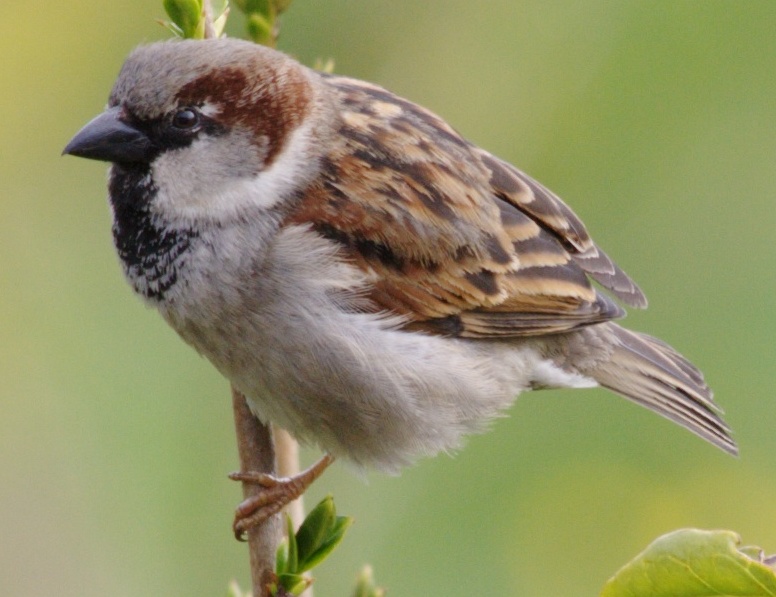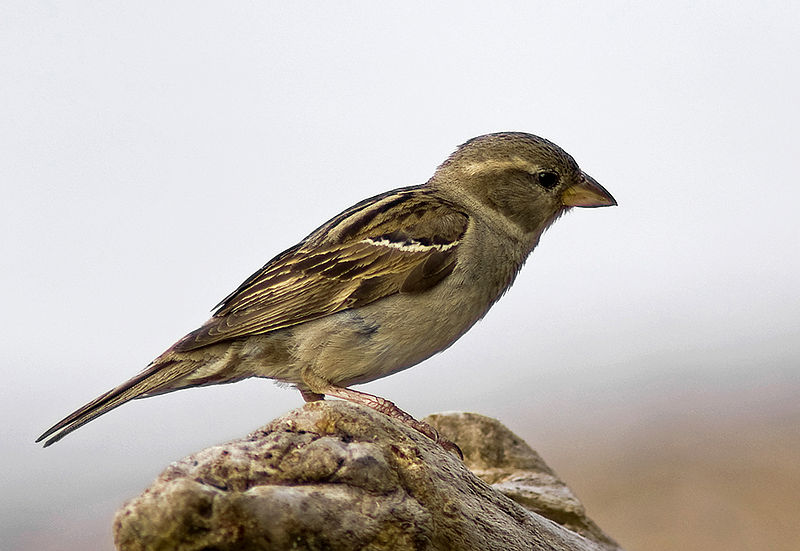house sparrowPasser domesticus
Identification:
The male of this familiar species has a black “bib,” a gray head, brown/tan/black patterned back, and white underparts. The female is much drabber with a similar back but more subdued face, no bib, and faint eye stripe. The bill in both sexes is compact. This species was introduced in the US in 1851 from the UK and has since become one of the country’s most common. Behavior: House sparrows frequent places humans inhabit and avoid wilder environments. They mainly eat seeds, readily adapting to birdseed and farmed grain crops. They flock together and chirp incessantly. They are cavity nesters and compete very well against native species. What brings it to the SBG? Food, cover, nesting sites. House Sparrows are very adaptable where eating and nesting are concerned. When can I see it? Year-round. |


